I. Introduction: The Link Between Unconscious Shame and Self-Doubt
Self-doubt can arise at any moment. And if it persists, it silences our voice, affects our sense of self, and robs us of opportunities we know we are capable of seizing.
Yet, within the shattered pieces of self-doubt, lies unconscious shame.
Puppeteering the strings of fear and desire.
That is to say, unconscious shame often fuels the fear of rejection, conflict, and failure. And drives the desire to be liked, accepted, and praised.
So, it becomes difficult to live authentically and act and speak from a place of truth.
Even when you know what you want to say or do, you may feel paralyzed by the strings that hold you. Or struggle to connect with your real thoughts and feelings altogether.
So, you find yourself trapped between the borderland of self-trust and self-doubt, with unconscious shame on guard.
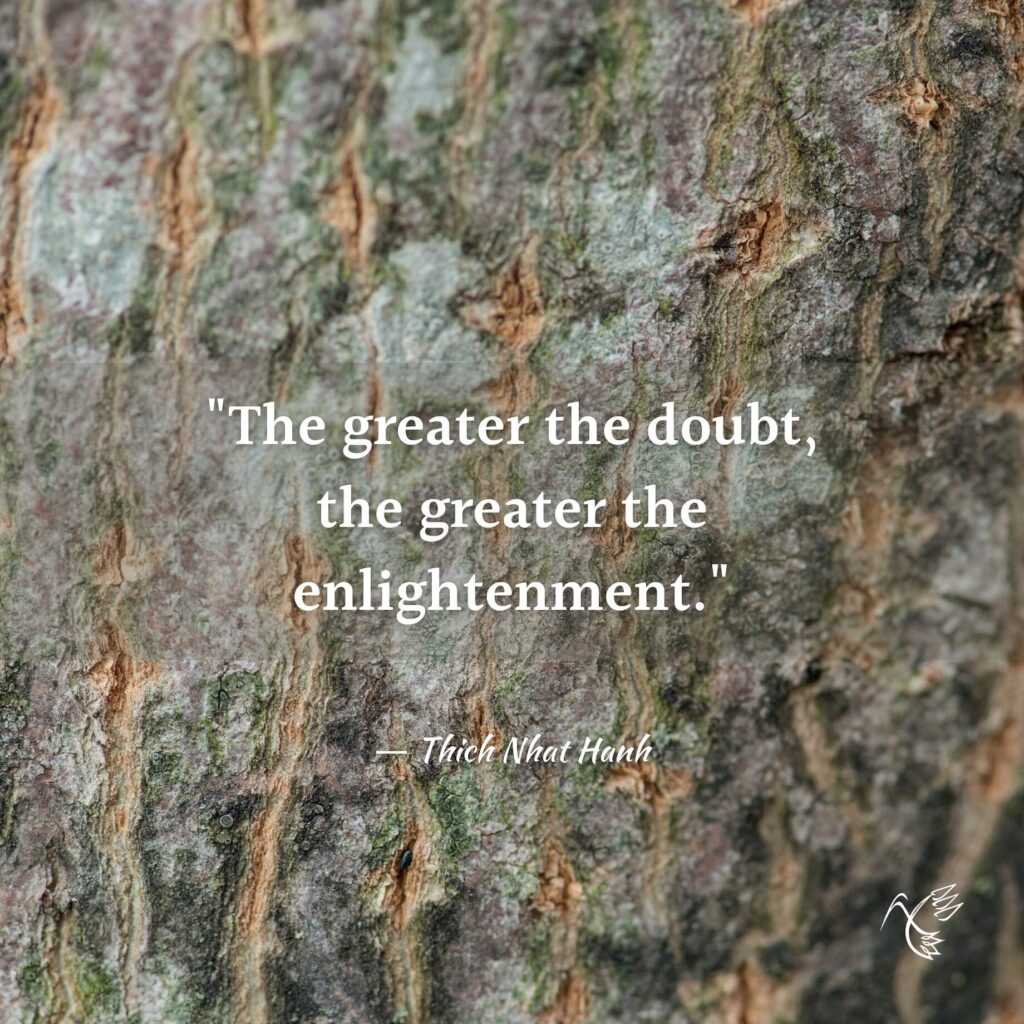
II. How the Wound of Unconscious Shame is Created
Shame can show up when we perceive that we’ve violated societal expectations or social norms, gone against our own moral code, or made a mistake or failed.
It is an emotion we all experience and it plays a role in regulating our behavior and navigating social situations.
So, although shame can result in discomfort and self-consciousness, it can help us avoid actions that jeopardize our well-being and sense of belonging.
Along with its social functions, shame increases self-awareness and reflection, so we can learn from our mistakes and grow as individuals.
However, toxic or unconscious shame can lead to low self-worth, chronic self-doubt, depression, and anxiety.
What is Unconscious Shame and How Does it Relate to Self-Doubt
Unconscious shame runs deeper than conscious shame and affects us in ways that we aren’t always aware of.
Sometimes we think our self-doubt is due to a lack of confidence when really, low self-esteem is just a scar left by the wound of shame.
This wound is often at the root of feeling inadequate, worthless, and disappointed in oneself. It makes us feel small, not good enough, and powerless.
So, we doubt and criticize ourselves, because this energy of shame courses through us.
But by becoming aware of unconscious shame, we can break the patterns of self-doubt and fear, and restore our confidence and authenticity.
The Development of Unconscious Shame
As human beings, our basic need to belong and feel safe is vital to our physical and emotional well-being.
However, when we experience criticism, neglect, rejection, or are held to unrealistic standards, it waters the seeds of unconscious shame within us.
As a result, making a mistake or experiencing failure can make us feel like there is something inherently wrong with who we are.
That is to say when shame is not released, it remains unconscious within us, deeply impacting our self-worth.
This pattern can be exacerbated during times of trauma and victimization, because our sense of safety and belonging is threatened.
We may internalize situations where we felt vulnerable, causing the wounds of unconscious shame to reopen and be reinforced. Additionally, when we have been victimized, we may internalize self-blame, but this blame and shame are not ours to bear.
In fact, during times of vulnerability, lacking acceptance, understanding, and support can cause our sense of self to fragment further.
So, although shame is a normal human experience, its energy can get trapped and intertwined with our sense of self.
These past experiences of being victimized, ridiculed, rejected, and reprimanded are seared into our unconscious memory.
And just as we learn to associate a hot stove with danger, we go to lengths to avoid the fires of shame.
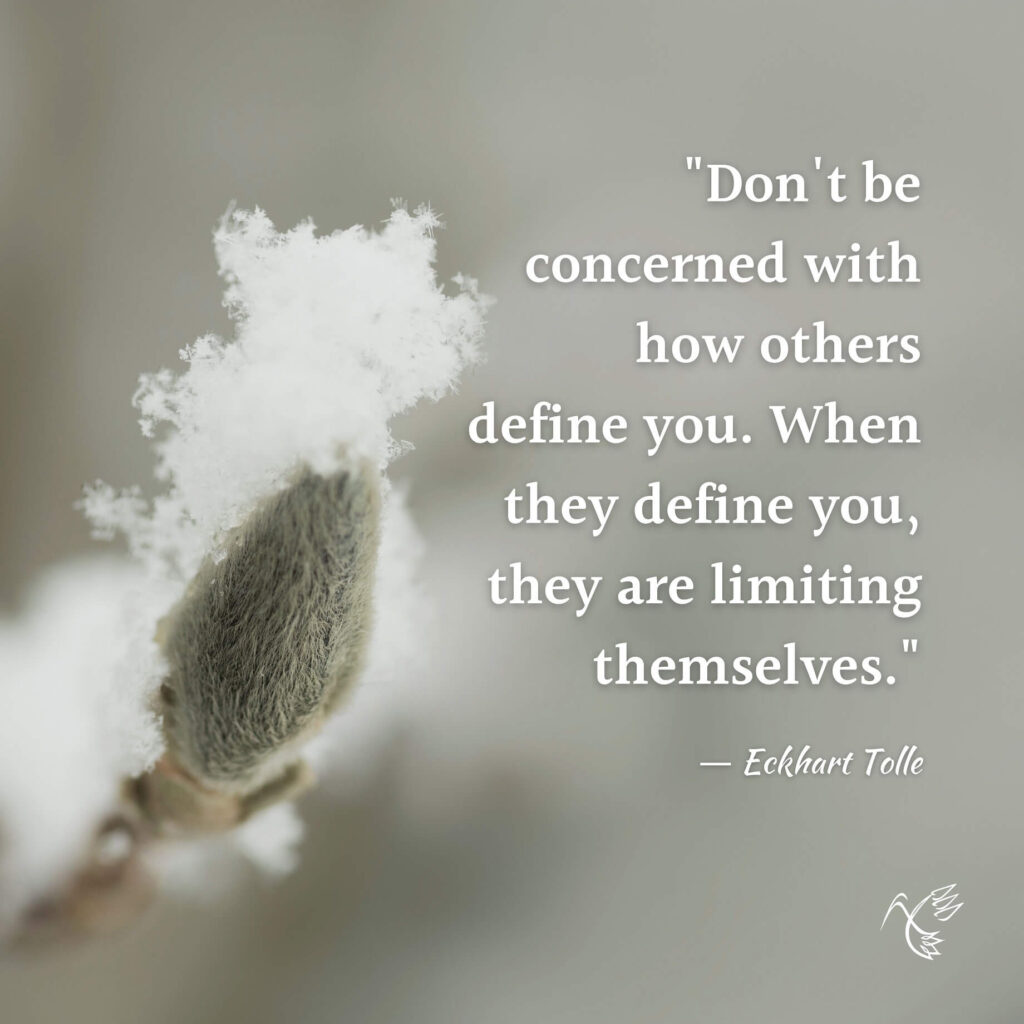
III. Self-Doubt as a Messenger
Unconscious shame signals to us that we are unsafe and don’t belong. It makes us feel worthless and vulnerable.
This results in self-doubt which leads to procrastination, perfectionism, overthinking, people-pleasing, ruminating, seeking validation, overcompensating, and fearing failure.
Instead of trusting and believing in ourselves, we hold ourselves to unrealistic standards, beat ourselves up for mistakes, or compare ourselves to others.
Moreover, when our self-worth is intertwined with a need for approval, we feel anxious about disappointing people and want to avoid their disapproval.
This makes it difficult to say no, have healthy boundaries, be direct, ask for help, and seize opportunities.
This is not uncommon. Many of us are conditioned to conform to other people’s expectations, even to the extent that we are willing to accept mistreatment.
But our worth is not determined by our successes or failures, or by what other people want or think.
In truth, we are born with both the desire for belonging and safety and the innate ability to express ourselves freely.
So, to dance like no one is watching means that in the absence of judgment, there is no need for shame or self-doubt. There is freedom in this.
But when we don’t trust ourselves, we are plagued by confusion, uncertainty, and a sense of unease.
On one hand, self-doubt tries to protect us from potentially experiencing more shame. And on the other hand, it is a messenger reminding us to trust ourselves.
Fill Your Cup Instead of Emptying It
Imagine you have a cup that is full to the brim with your energy. Whenever you need to recharge, you just take a sip.
But each time you say or do something you really don’t want to, you pour out a little bit of energy. The more you do this, the more depleted you become until there’s nothing left.
However, when you’re in alignment with your authentic self, you fill your cup again.
In the face of self-doubt, we are so disconnected from ourselves that we may not recognize what fills us and what drains us until we are empty.
Whenever I fell into patterns of people-pleasing, my anxiety was through the roof. I felt silenced and trapped because I didn’t want to disappoint other people. I wanted to say no, but the voice of self-doubt kept feeding my fear of rejection.
The thing is, self-doubt can show up in many ways and has many layers. Trying to work through them all would take years and often does not solve the root problem of unconscious shame.

IV. Becoming Aware of and Releasing Unconscious Shame
Although I saw the impacts of unconscious shame on my self-esteem and ability to trust myself, I wasn’t aware of the root cause.
One day when I felt anxious, I began practicing body awareness. I was sitting down and began to notice my posture. Slumped shoulders, bowed head, lowered gaze, wrinkled forehead, and tight jaw. The clues were all there, and I felt small, like a child.
On the inside, I became aware of a tightness in my throat, an uncomfortable sensation in my solar plexus, my heart rate was beating quickly, and I wanted to hide.
Even though I knew I was safe, at that moment I felt unsafe.
So, I held myself in this awareness. And I became aware of the unconscious shame within me. It had been there for a long time due to traumas and judgments I internalized. But it was dissociated from my awareness.
Often, I generalized this feeling as part of anxiety, which it is. But over the years, I had completely missed the root of this particular trigger.
This is the first step in healing unconscious shame: awareness.
Shame gets trapped in our psyche and nervous system, but it can be healed and released, breaking patterns of self-doubt. And the first step is learning to recognize it when it arises.
As our self-awareness increases, our self-doubt decreases.
10 Questions for Becoming Aware of Unconscious Shame
You can investigate unconscious shame by asking yourself the following questions:
Note, there are no right or wrong answers, thoughts, or feelings. Everyone’s experience is different. So, try to leave behind all expectations and judgments.
Becoming Aware of Your Thoughts, Feelings, and Triggers
- When do I feel the most self-doubt, and what are the thoughts and emotions that come up for me in those moments?
- What past experiences have shaped my self-image, and how do they affect my behavior and thoughts today?
- In what ways do I seek approval or validation from others, and why do I feel the need for it?
- What situations or types of people trigger feelings of shame or inadequacy in me, and why?
- How do I respond to criticism or failure, and what is my inner dialogue in those moments?
- How do I set and maintain boundaries in my relationships, and do I feel guilty or ashamed for doing so?
- What is my relationship with vulnerability, and do I see it as a weakness or strength?
- What are my core values, and how do they guide my actions and decisions? Where do these core values come from?
- In what ways do I prioritize self-care and self-compassion, and how can I integrate these practices more fully into my life?
- How can I cultivate a deeper sense of self-awareness and self-acceptance, and what steps can I take to do so?
10 Steps for Releasing the Energy of Shame
This exercise is designed to help you become aware of the bodily sensations, postures, and deep-rooted memories associated with unconscious shame. By doing so, you can release it from your nervous system.
For some, this exercise will be more effective than changing thoughts and behaviors, because once the energy of unconscious shame is released, its effects also dissipate.
As you follow these steps, trust your intuition to guide you. Trust that whatever comes up, is right for you.
If at any time the exercise feels uncomfortable, stop and take some time to ground yourself. It is also recommended that you work with a therapist if needed.
Exercise for releasing shame and finding balance in mind and body
- When you’re triggered or notice shame-based thoughts and feelings, start by paying attention to your body.
- What sensations do you notice? Are there physical signs, such as tightness in your chest, throat, solar plexus, or stomach, increased heart rate, shallow breathing, etc?
- What does your posture indicate about your mood and sense of self? Are your shoulders slumped? Is your gaze lowered? Are you instinctively trying to make yourself small?
- Notice what you feel like doing and what actions you instinctively want to take when you experience shame. How does your body want you to act?
- Do these physical signs bring up memories or childhood experiences? If so, take a moment to cultivate compassion and kindness for your inner child.
- Return your awareness to your posture when you are ready. Has it changed? If so, do you sense the energy of shame increasing or dissolving? Or do you feel a sense of detachment?
- Once you feel like you’ve identified your physiological responses, begin breathing slowly and gently into them. Pay attention to the rise and fall of your belly or chest. This rhythmical deep breathing can calm the nervous system and reduce tension.
- Is there a specific physiological response that draws your attention more intensely? What do you notice when you bring your attention to it?
- Are there any areas of your body that feel more relaxed and at ease? Bring your attention to this area. Notice if bringing your attention to this area changes how you feel.
- Return to the feelings of shame if they are still present. Which part of the body draws your attention the most now?
- Spend a couple of moments thinking of a time when you felt the opposite of shame (ie. empowered, worthy, strong, confident). Notice if staying with this memory helps to discharge the energy of shame.
- Practice shifting your attention between sensations of shame and deep breathing, bodily discomfort and relaxation, from shame to memories of confidence and empowerment until you feel more balanced and at ease.
V. Conclusion: From Self-Doubt to Self-Trust
Self-doubt is not something to fear or avoid. Rather, it urges us to heal the wounds of unconscious shame. And it is a natural part of our growth. It signals that something needs a change or reevaluation in our lives.
The process of becoming aware of unconscious shame and releasing it may take time. So, it is important to cultivate patience and self-compassion.
If you notice your mind slipping away into self-criticism or self-doubt, this is an opportunity to practice releasing shame from the body.
As you practice self-awareness, self-acceptance, and self-compassion, the seeds of self-trust also grow within you.
Asking for help when needed is also a sign of progress and strength. It is a mark of self-care and self-worth.
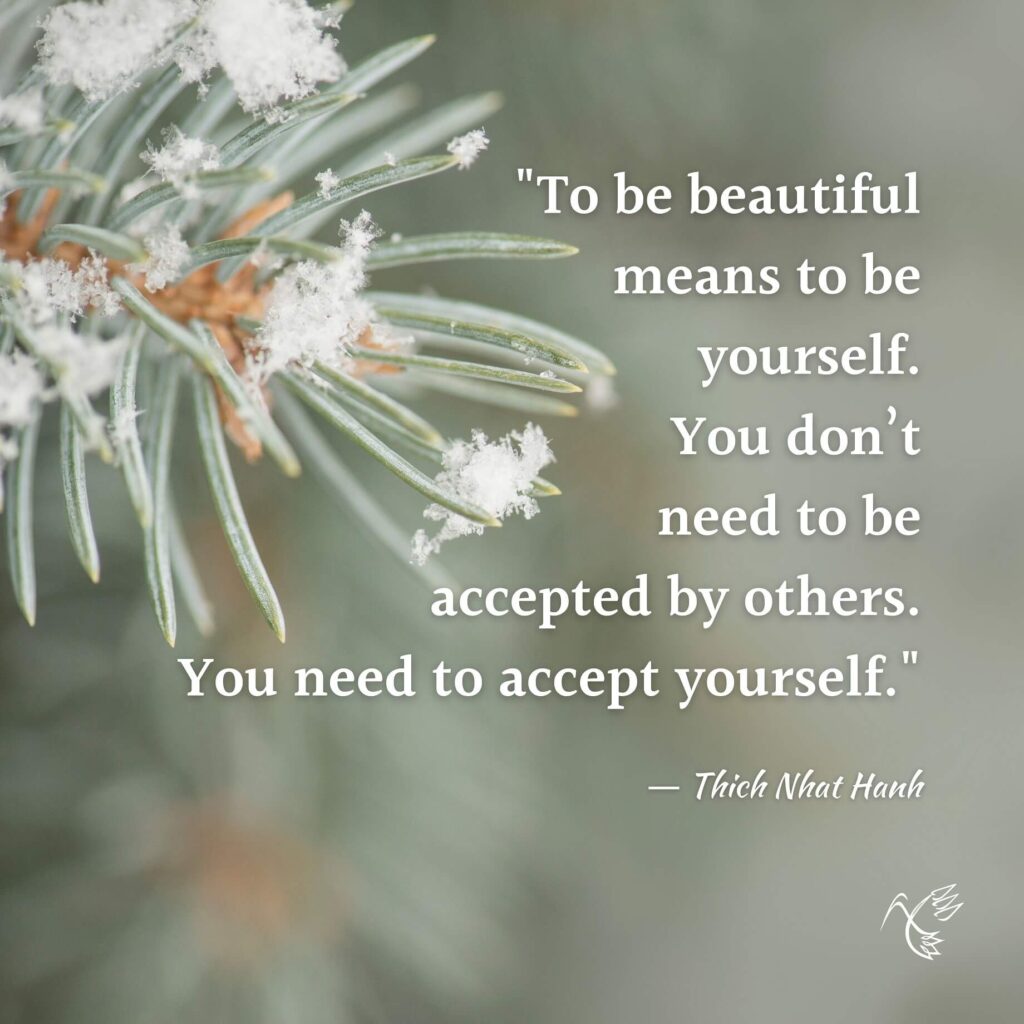
Your Life Without Unconscious Shame
By healing the wound of unconscious shame, you release the past. And naturally, self-confidence arises.
It becomes easier to make decisions that align with your values, which leads to greater outcomes, thereby increasing confidence in your ability to make good choices.
So, you rely less on external validation and believe more in yourself and your own abilities.
And because you trust yourself, you accept yourself for who you are and are not elevated by your strengths or torn down by your weaknesses. There is space for all of it, and your self-esteem grows.
This reduces stress, anxiety, and self-doubt. It allows us to better cope with challenges because we aren’t constantly held down by feelings of powerlessness.
Your relationships also improve because you can communicate from a space of truth and set healthier boundaries.
This attracts healthier bonds that are more fulfilling and satisfying.
Without the strings of unconscious shame, you live with greater authenticity and know your true self, which is inherently peaceful.
This authenticity allows you to be in tune with your thoughts, emotions, and actions. You become more aware of your own needs, desires, and values. And you trust them.
And other people know they can trust you as well to be genuine and honest.
Furthermore, your life’s purpose becomes aligned with your true values and beliefs.
And you feel clear, knowing that this clarity is always available beyond the veil of unconscious shame.
Sending you full love and encouragement,
Ravelle
What are your experiences with self-doubt and unconscious shame? How have you overcome them?
I would love to hear from you in the comments!
Related Resources
Related Articles
Understanding and Healing the Impacts of Trauma
Recommended Videos

If you found value in this post, please comment below, share this article, or join my email list to get updates on new articles and access all my free resources.


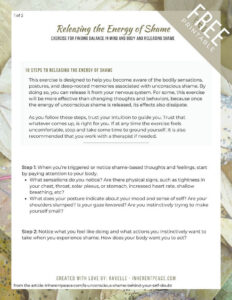
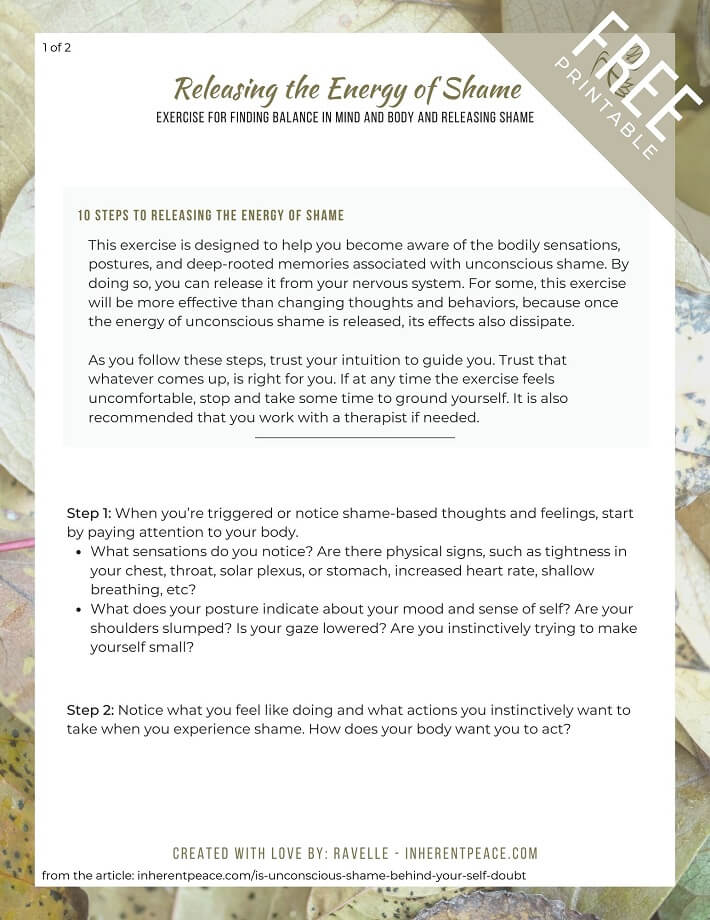
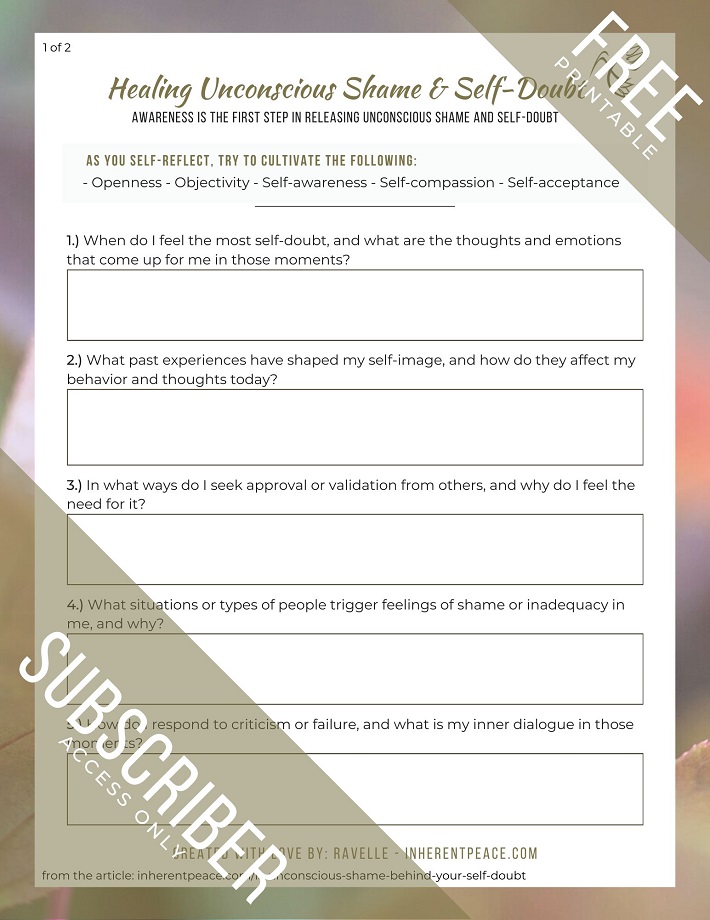
Wow. This is such an empowering article! I’ve been taking my time to slowly read and work through the journal prompts. I’ve always known I felt a lot of shame and have worked through much of it but your words really hit home for me right now. Something I noticed is that shame tends to arise within me during my monthly cycle with lot of intense anger and frustration occurring. I also observe I tend to go on overdrive to please and compare myself to others. I am grateful for your exercises and will be incorporating these prompts and breath work- especially during the times in which I feel subconscious shame is really intensifying and rising to the surface. Thank you Ravelle!
Thank you, Jackie. I appreciate you sharing your experience and taking the time to read my article. It’s so encouraging to hear that you found the journal prompts and exercise helpful. I admire your self-awareness and the patterns you’ve identified, including the relationship between shame and your monthly cycle. It makes total sense to me. Hormonal changes and body pain/aches affect me too. Thank you for mentioning it. It’s wonderful that you are taking steps to address your experience with shame and I’m delighted to know that you have some takeaways from this article!
Thank you! It’s so true the hormonal changes can add an extra layer that can affect emotional and thoughts. I’m truly grateful for your articles and always get a lot out of them!